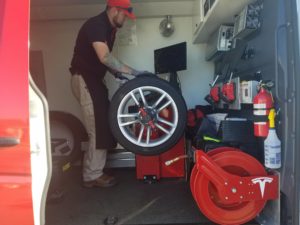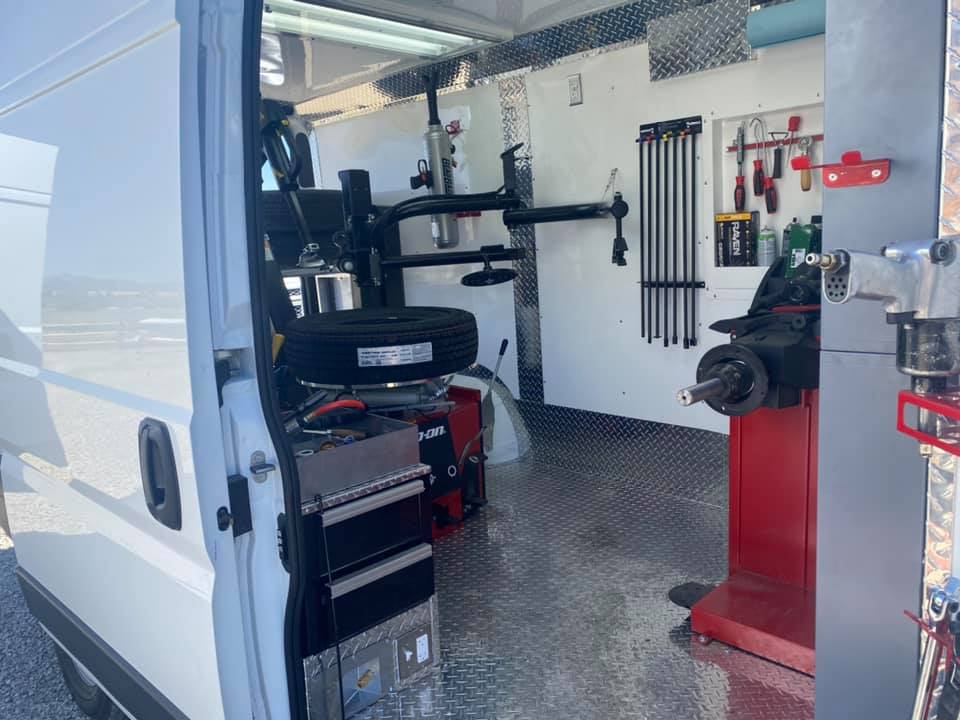Trustworthy Mobile Tire Change and Replacement in Las Vegas
Trustworthy Mobile Tire Change and Replacement in Las Vegas
Blog Article
Tire Solution: Proven Methods for Ideal Tire Maintenance and Treatment
Keeping optimal tire problem is critical for both safety and performance of any kind of automobile. From making certain proper tire pressure to routine rotation and placement, there are proven techniques that can significantly expand the life expectancy of your tires and improve general driving experience. As we explore the complexities of tire care and upkeep, we will certainly uncover essential standards that every car proprietor ought to stick to for the finest possible outcomes. Let's explore the globe of tire solution and find the secrets to keeping your tires in superior shape for the long haul.
Importance of Tire Pressure
Adequate tire pressure promotes much better gas performance, as under-inflated tires can lead to boosted rolling resistance, causing the engine to function tougher and take in even more gas. Correct tire stress makes certain even tread wear, boosting tire long life and saving cash in the long run by delaying the demand for early replacements. Consistently adjusting and examining tire pressure, specifically in the past long journeys, is a straightforward yet reliable way to boost car efficiency, prolong tire life expectancy, and prioritize security on the roadway.
Tire Rotation Standards
When thinking about tire turning guidelines, it is vital to understand the relevance of this maintenance task in maximizing tire life expectancy and keeping optimal vehicle efficiency. Tire rotation involves changing the placement of each tire on a car to make certain even step wear. Front tires have a tendency to wear faster than rear tires due to steering pressures, making normal rotation important for well balanced wear patterns. The suggested turning pattern differs depending upon whether a car is front-wheel, rear-wheel, all-wheel, or 4x4. Normally, tires need to be revolved every 5,000 to 7,500 miles, or as encouraged in the lorry handbook. Disregarding tire rotation can cause unequal wear, affecting handling, traction, and potentially compromising vehicle safety. By sticking to proper turning standards, drivers can expand the life of their tires, boost fuel performance, and enhance general driving experience. Normal rotation is a simple yet efficient upkeep practice that contributes substantially to tire long life and automobile efficiency.

Benefits of Wheel Positioning
Ensuring appropriate wheel placement after tire rotation is crucial for maintaining balanced wear patterns and maximizing automobile efficiency. Wheel placement describes the adjustment of the angles of the wheels to the supplier's specifications. One of the essential advantages of wheel alignment is improved steering and managing action. When the wheels are appropriately lined up, it minimizes guiding initiative, making sure a smoother and more regulated driving experience. Furthermore, proper wheel alignment helps to prolong the life expectancy of your tires. Misaligned wheels can create irregular tire wear, causing premature tire substitute and boosted maintenance expenses.

Tire Footstep Deepness Inspect
Carrying out a normal inspection of tire tread deepness is vital for preserving safe driving problems and prolonging the lifespan of your tires. The walk on your tires plays an he has a good point important duty in giving grip, especially in wet or unsafe conditions. To check your tire step deepness, you can utilize a walk deepness gauge or the dime examination. The advised tread depth is at the very least 2/32 of an inch. If the step depth is below this threshold, it is time to change your tires to ensure optimal performance and safety when driving. Uneven step wear can show concerns with tire alignment, pressure, or suspension, highlighting the significance of normal step depth checks. Overlooking to check and keep correct step deepness can result in decreased grip, longer braking ranges, and an increased threat of hydroplaning. By incorporating tire walk deepness check out your routine upkeep routine, you can drive with self-confidence knowing that your tires are in leading problem.
Seasonal Tire Evaluation
Seasonal tire assessment is a fundamental facet of tire maintenance that guarantees tires are ready to deal with the difficulties positioned by various climate conditions. In prep work for winter months, it is necessary to examine the tire pressure consistently as cold temperatures can create tire stress to go down. By performing routine seasonal tire evaluations, chauffeurs can lengthen tire life-span, boost fuel performance, and most significantly, make sure a safe and secure driving experience in differing weather conditions.
Conclusion
To conclude, keeping appropriate tire pressure, revolving tires consistently, lining up wheels properly, monitoring walk depth, and carrying out seasonal inspections are crucial methods for optimum tire treatment. By complying with these proven techniques, drivers can guarantee their tires last longer, do better, and add to total car security. It is very important to focus on tire maintenance to stop mishaps, improve fuel effectiveness, and lengthen the lifespan of tires.
Appropriate tire stress promotes much better gas effectiveness, as under-inflated tires can lead to boosted rolling resistance, causing the engine to function more challenging and take in even more gas.When thinking about tire rotation standards, it is necessary to recognize the significance of this maintenance job in taking full advantage of tire life-span and maintaining optimum vehicle performance. Seasonal tire evaluation is a basic facet of tire maintenance that guarantees tires are try this web-site all set to encounter the obstacles posed by various weather conditions. By performing regular seasonal tire assessments, vehicle drivers can extend tire life-span, boost fuel effectiveness, and most notably, make sure a safe and secure driving experience in differing climate problems.
In verdict, maintaining appropriate tire stress, rotating tires regularly, aligning wheels appropriately, keeping track of walk deepness, and performing seasonal assessments are crucial practices for optimum tire care.
Report this page